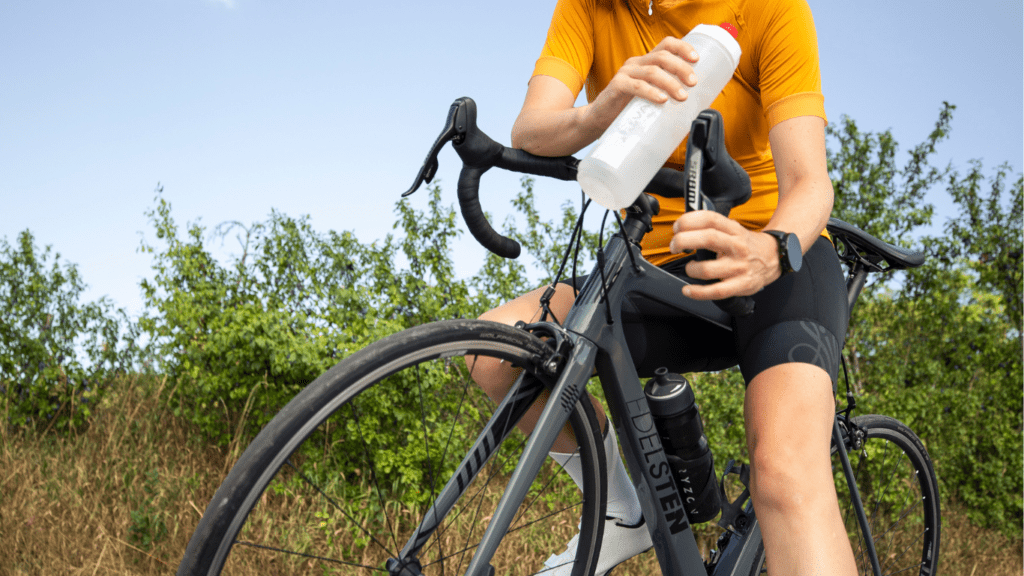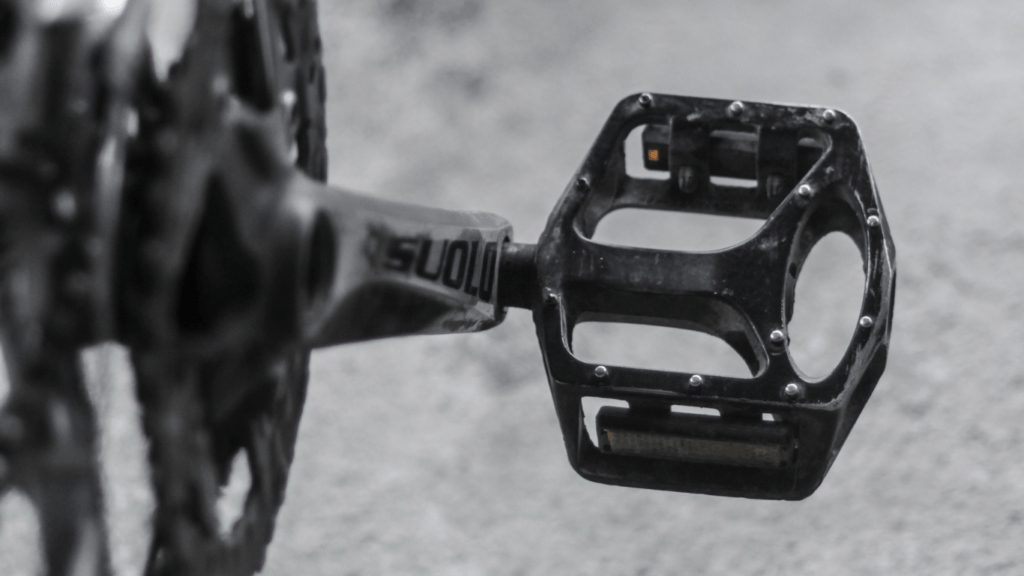Overview of Hydration Options for Cyclists
Cyclists need efficient hydration solutions to stay hydrated and maintain performance. Below, I break down the key aspects of staying hydrated and the types of gear available.
Importance of Staying Hydrated
Staying hydrated keeps energy levels stable and prevents fatigue. During long rides, the body loses water through sweat and breathing. Dehydration can lead to reduced endurance and concentration.
To stay refreshed, cyclists should drink water regularly throughout their ride.
Types of Hydration Gear
Water Bottles
Water bottles are essential for cyclists. They come in various sizes, typically 500ml to 750ml, and fit in standard bottle cages on bikes. Bottles with easy-to-use spouts or straws offer quick sips without slowing down.
Insulated bottles keep water cool for extended periods.
Hydration Packs
Hydration packs provide a higher capacity for longer rides. These packs, worn on the back, often hold 1.5L to 3L of water in a bladder with a tube for hands-free sipping.
They usually include:
- storage for tools
- snacks
- personal items.
Brands like CamelBak and Osprey are popular.
Frame-Mounted Reservoirs
Frame-mounted reservoirs fit within the bike frame and offer an alternative to traditional bottles and packs.
These systems connect a bladder to a tube similar to hydration packs, providing high water capacity without occupying the back.
Combination Systems
Combination systems integrate both bottles and pack reservoirs. Cyclists can use a frame-mounted reservoir for a primary source and a bottle for extra capacity.
This setup is ideal for those who prefer different hydration methods during rides.
Selecting the right gear enhances hydration and performance. By understanding the options, cyclists ensure they’re equipped for optimal hydration on any ride.
Key Features to Consider in Water Bottles and Hydration Packs
Choosing the right water bottle or hydration pack enhances a cyclist’s hydration routine. Several key features play an important role in this selection.
Material and Durability
High-quality materials increase longevity. Stainless steel and BPA-free plastics are popular choices; stainless steel resists dents while BPA-free plastics are lightweight yet durable.
Look for leak-proof designs and robust construction to withstand rough terrains.
Capacity and Weight
Optimal capacity balances hydration needs with weight. Water bottles typically range from 20 to 32 ounces while hydration packs can hold up to 3 liters.
Choose a size that aligns with your ride duration and intensity. Lightweight models reduce strain during long rides.
Ease of Use While Cycling
Easy access ensures uninterrupted hydration. Bottles with squeeze designs or fast-flow valves allow quick sips. Hydration packs with bite valves and easy-to-reach tubes minimize distractions. Consider models with convenient mounting options for seamless access while cycling.
Top Water Bottles for Cyclists
Choosing the right water bottle can significantly enhance your cycling experience by ensuring you stay hydrated efficiently.
Stainless Steel Bottles
Stainless steel bottles offer durability and are excellent for maintaining the taste of water. They resist dents and scratches, ensuring longevity even on rugged terrain.
Many cyclists prefer stainless steel for its strength and ability to avoid retaining flavors. Brands like:
- Klean Kanteen
- Hydro Flask
offer top-quality options.
For instance, the Klean Kanteen Classic provides a rugged design with a capacity ranging from 18 oz to 64 oz, catering to various hydration needs. Additionally, stainless steel bottles often feature wide mouths, making them easy to clean and fill with ice.
Insulated Water Bottles
Insulated water bottles keep beverages at optimal temperatures for longer periods. Cyclists value these bottles, particularly on hot summer rides.
The CamelBak Podium Chill and Polar Bottle Insulated Sport are popular among riders. The CamelBak Podium Chill, for example, uses double-walled insulation to keep water cold twice as long as a standard bottle.
Polar Bottle’s unique Tri-Layer insulation and radiant heat-reflective technology help maintain drink temperatures, enhancing hydration over extended rides.
Both brands offer easy-to-squeeze designs for quick and efficient hydration while on the move.
These water bottles ensure cyclists stay hydrated, efficiently maintaining performance and energy levels during rides.
Best Hydration Packs for Long Rides

Low-profile hydration packs are ideal for cyclists who prefer minimal bulk. These packs feature slim designs that fit snugly against the back, reducing wind resistance and improving comfort.
Low-profile Packs
Osprey Katari 3 is a top choice. It offers a 2.5-liter reservoir in a streamlined design. The pack provides just enough storage for essentials without adding weight.
Another great option is the CamelBak Classic Light, which includes a 2-liter Crux reservoir and weighs less than 1 pound.
Its narrow profile ensures comfort on long rides, even on uneven terrain. Both packs use breathable materials to enhance airflow, reducing sweat accumulation.
Packs with Storage Compartments
Multi-functional hydration packs add utility for those requiring extra storage. The CamelBak M.U.L.E. offers a 3-liter hydration capacity and ample room for tools, snacks, and layers.
It’s designed with multiple pockets and a separate compartment for the reservoir, ensuring organization.
The Osprey Raptor 14, featuring a 2.5-liter reservoir and 14 liters of storage, includes a tool roll and LidLock for helmet carry. These packs ensure you carry everything needed without compromising on hydration gear.
Care and Maintenance Tips
Proper care extends the life of water bottles and hydration packs. Follow these tips for optimal performance.
-
Cleaning Your Hydration Gear
Regular cleaning prevents mold and bacteria. For water bottles, use warm water and mild soap. Use a bottle brush to scrub interiors, paying special attention to crevices.
Rinse thoroughly to remove soap residue.For hydration packs, soak the reservoir in warm water with a teaspoon of baking soda. Use a brush set for cleaning the tube and bite valve. Rinse well and allow components to dry completely before reassembling.
-
Long-Term Storage Solutions
Proper storage maintains hygiene and functionality. For water bottles, air dry completely before storing with the cap off to avoid trapped moisture.
Store hydration reservoirs in the freezer between uses to inhibit bacterial growth. If freezer storage isn’t possible, ensure they are dry before storing in a cool, dry place.
Store hydration packs flat to prevent kinks in the tubes and keep them accessible for impromptu rides.

 I'm Daniel Leverette, and I’m excited to be part of the incredible team at Cycle Smooth Ride Long. Cycling has always been a passion of mine, and now, I get to share that passion with you by bringing expert insights, reviews, and tips to help you elevate your ride.
At Cycle Smooth Ride Long, we believe that every cyclist deserves the best experience, whether you’re hitting the pavement for a casual ride or gearing up for an intense training session. My goal is to ensure that you have the knowledge and tools you need to enjoy every mile, from choosing the right gear to optimizing your nutrition and fitness.
I'm Daniel Leverette, and I’m excited to be part of the incredible team at Cycle Smooth Ride Long. Cycling has always been a passion of mine, and now, I get to share that passion with you by bringing expert insights, reviews, and tips to help you elevate your ride.
At Cycle Smooth Ride Long, we believe that every cyclist deserves the best experience, whether you’re hitting the pavement for a casual ride or gearing up for an intense training session. My goal is to ensure that you have the knowledge and tools you need to enjoy every mile, from choosing the right gear to optimizing your nutrition and fitness.
